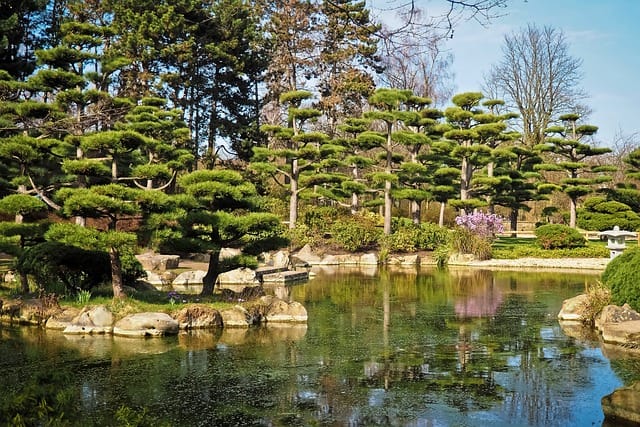Identifying Japanese Cedar trees
Welcome to this article about identifying the Japanese Cedar tree

In this article:
Introduction
Welcome to this article about identifying the Japanese Cedar tree. In this guide, we will explore the characteristics, physical description, distribution, habitat, lifecycle, cultural significance, economic value, and identification tips for the Japanese Cedar tree.
Characteristics of the Japanese Cedar tree
Before we delve into the details, it is important to understand some key characteristics of the Japanese Cedar tree:
- Scientific name: Cryptomeria japonica
- Also known as: Sugi
- Belongs to the cypress family (Cupressaceae)
- Native to Japan and commonly found in East Asia
Physical description
The Japanese Cedar tree is an evergreen coniferous tree that can reach a height of over 50 meters. Some notable physical features include:
- Pyramidal shape when young, becoming more cylindrical with age
- Rusty-red bark that exfoliates in long strips
- Needle-like leaves that are dark green and arranged spirally around the branches
- Cones that are small, spherical, and woody, initially green and turn brown over time
Geographical distribution
The Japanese Cedar tree is native to Japan, but it has been widely cultivated in other parts of East Asia and around the world. It is particularly popular in regions with similar climates to Japan.
Habitat and environment
The Japanese Cedar tree prefers moist environments and is often found in areas with high rainfall. It can adapt to a range of soil types but thrives best in well-drained, acidic soils. It is commonly seen in forests, parks, gardens, and plantations.
Lifecycle and growth pattern
The lifecycle of the Japanese Cedar tree includes seed germination, seedling growth, and maturation into a mature tree. It reproduces through wind-pollinated cones and can live for several hundred years.
Cultural significance
In Japanese culture, the Japanese Cedar tree holds great significance and is considered a sacred tree. It is often associated with Shinto shrines and is known for its use in traditional Japanese construction, particularly in temples and shrines.
Economic value and uses
The Japanese Cedar tree has significant economic value and a wide range of uses, including:
- Timber for construction, furniture, and crafting
- Paper production
- Essential oils extraction
- Landscaping and ornamental purposes
Identification tips
To identify the Japanese Cedar tree, you can look for the following clues:
- Distinct pyramidal shape when young
- Rusty-red exfoliating bark
- Dark green, needle-like leaves arranged spirally
- Small, brown, woody cones
Differentiating the Japanese Cedar from similar species
While there may be some similarities with other coniferous trees, you can differentiate the Japanese Cedar tree by considering its distinct characteristics such as bark color, leaf arrangement, and cone shape.
Conclusion
By understanding the characteristics, physical description, distribution, habitat, lifecycle, cultural significance, economic value, and identification tips provided in this article, you should be able to confidently identify the Japanese Cedar tree. Its unique features and importance in various aspects make it a fascinating species worth recognizing and appreciating.
